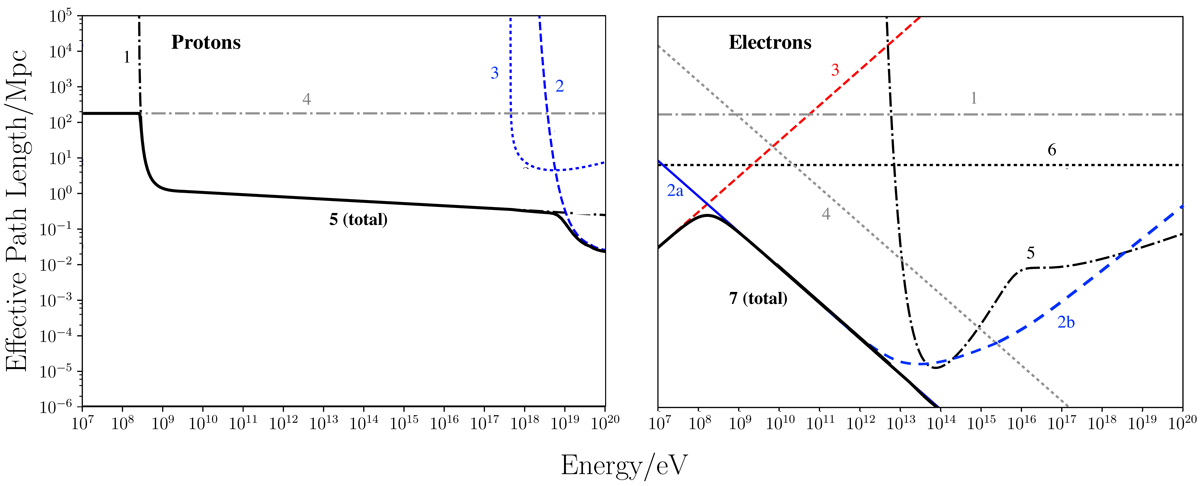Fig. 1.

Left: CR proton losses in terms of effective interaction path lengths. This results from a protogalaxy model with target density of np = 10 cm−3, a CMB radiation field specified at a redshift of z = 7. The thick black line indicates the total effect that would be experienced by a CR proton at the indicated energy accounting for all energy loss contributions. The lines, as labelled, are (1) pp Pion-production (pp, pπ±π0); (2) CMB Photo-pion (pγ, π±π0); (3) CMB Photo-pair (pγ, e±); (4) adiabatic losses due to cosmological expansion; (5) total. Right: secondary CR electron loss lengths with the same model. The lines, as labelled, are (1) adiabatic losses due to cosmological expansion; (2) inverse-Compton (radiative) cooling due to the CMB with (2a) as the estimated path length in the Thomson limit, and (2b) being the estimated path length if accounting for the transition to Klein-Nishina behaviour at higher energies (we find this does not significantly impact our later results, so the Thomson limit is used in our main calculations); (3) Coulomb losses (responsible for directly heating the ISM plasma); (4) synchrotron (radiative) cooling in a 5 μG magnetic field, being an appropriate strength for this model; (5) Triplet Pair-Production (eγ, e±); (6) free–free (Bremsstrahlung) losses; (7) total.
Current usage metrics show cumulative count of Article Views (full-text article views including HTML views, PDF and ePub downloads, according to the available data) and Abstracts Views on Vision4Press platform.
Data correspond to usage on the plateform after 2015. The current usage metrics is available 48-96 hours after online publication and is updated daily on week days.
Initial download of the metrics may take a while.


